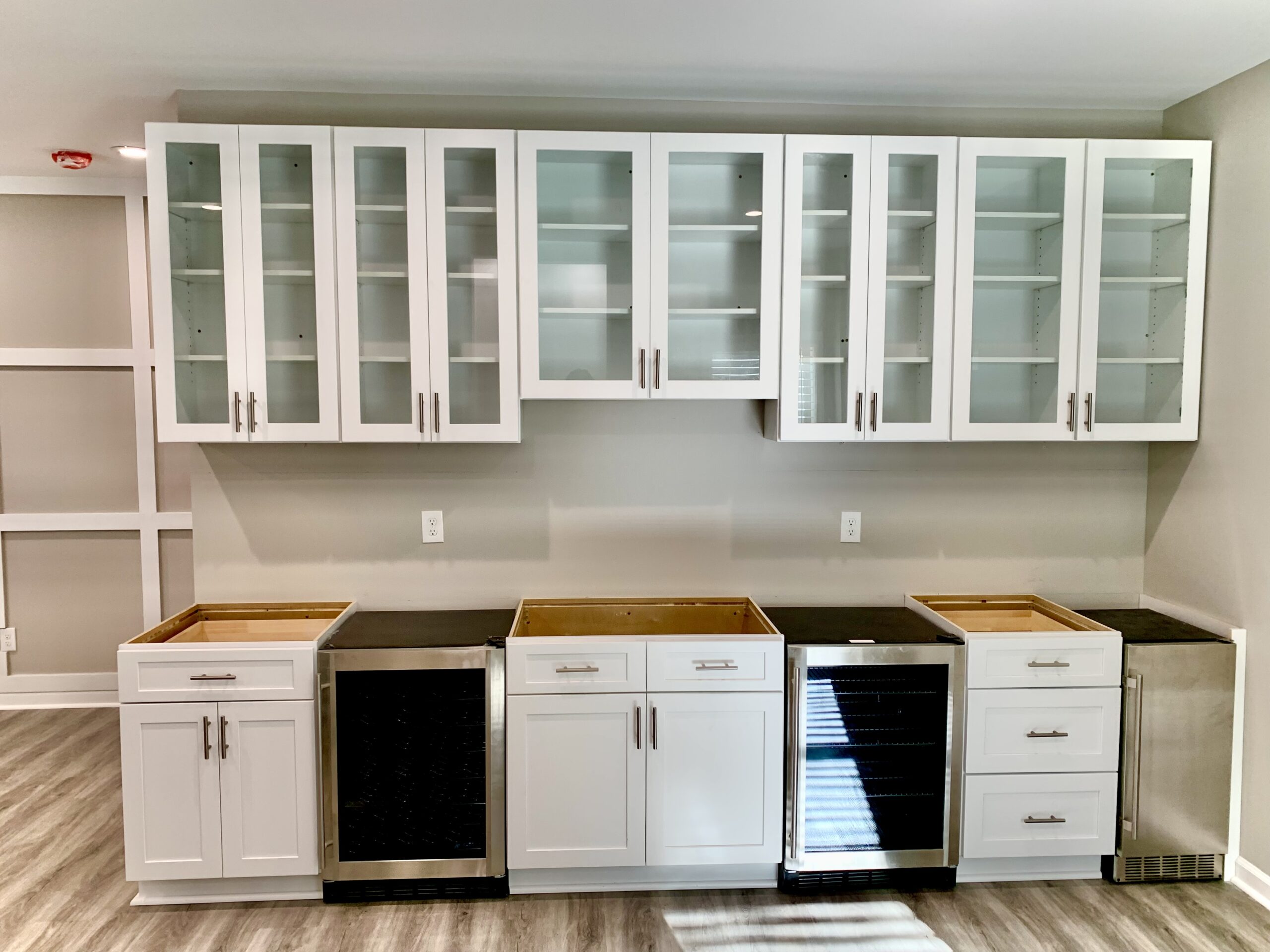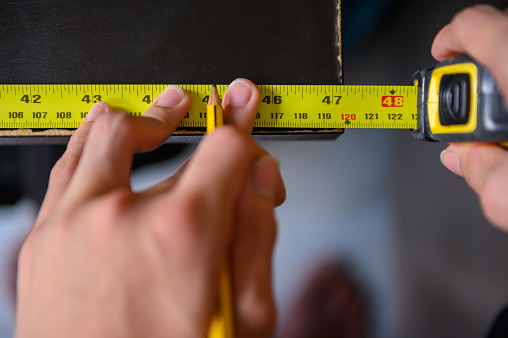What Are the Different Types of Kitchen Cabinets?
When designing or remodeling a kitchen, one of the foremost decisions you will make is choosing the right kind of kitchen cabinet. Cabinets not only provide essential storage but also play a crucial role in the décor of your kitchen. With so many choices available, even the most decisive people can feel overwhelmed when trying to pick the right cabinets that match their style, budget, and needs. In this comprehensive guide, we’ll explore various types of kitchen cabinets, their pros and cons, and help you make a well-informed decision.
Why Cabinet Type Matters
Before we dive into the specific types of kitchen cabinets, let’s briefly discuss why this decision is so important:
- Cabinet Aesthetic Impact: Cabinets are one of the first things that catch attention in a kitchen. Their style, color, and finish set the tone for the entire space.
- Functionality: Different types of cabinets offer varying levels of storage, accessibility, and ease of use. Choosing the right type can make your kitchen more efficient and enjoyable to work in.
- Budget Considerations: Cabinets will take up a significant portion of your overall kitchen renovation budget. Some options are relatively inexpensive, while others can be quite costly.
- Resale Value: High-quality, stylish cabinets can enhance the resale value of your home, making them a worthwhile investment.
Now, let’s explore the different types of kitchen cabinets, categorized by their construction, style, and materials.
Types of Kitchen Cabinets by Construction
1. Stock Cabinets
Stock cabinets are pre-manufactured and come in standard sizes and a variety of colors and finishes. They are mass-produced, making them the most economical choice in kitchen cabinets.
Pros:
- Inexpensive: Stock cabinets are budget-friendly, making them an excellent option for those managing their renovation costs.
- Readily Available: Since they are pre-made, stock cabinets are readily available and can be delivered quickly.
- Easy Replacement: If a cabinet is damaged or you need additional storage later, finding a matching stock cabinet is usually easy.
Cons:
- Limited Customization: Stock cabinets come in predetermined sizes and finishes, so customization options are limited.
- Basic Quality: While high-quality stock cabinets exist, many are made with lower-grade materials, affecting their durability.
- Design Limitations: You may need to adjust your kitchen design to fit the available stock sizes, which can limit your layout options.
2. Semi-Custom Cabinets
Semi-custom cabinets offer more flexibility than stock cabinets, allowing for some level of customization in terms of size, finish, and design. They are made to order based on your specifications, offering a middle ground between stock and custom cabinets.
Pros:
- Customization Options: Semi-custom cabinets provide a wider range of sizes, finishes, and features for a more personalized kitchen design.
- Better Quality: These cabinets are generally made with higher-quality materials than stock cabinets, offering greater durability.
- Design Flexibility: Semi-custom cabinets can be tailored to fit your kitchen layout more precisely, making better use of available space.
Cons:
- Higher Cost: Semi-custom cabinets are more expensive than stock cabinets, though still less costly than fully custom options.
- Longer Lead Time: Because they are made to order, semi-custom cabinets have a longer delivery time compared to stock cabinets.
- Limited Customization: While there is some flexibility, you are still restricted to the options provided by the manufacturer.
3. Custom Cabinets
Custom cabinets are built from scratch according to your exact specifications. They offer the highest level of customization, allowing you to choose every detail, from size and material to finish and hardware.
Pros:
- Full Customization: You have complete control over every aspect of the design, ensuring the cabinets perfectly match your vision and kitchen layout.
- High-Quality Materials: Custom cabinets are typically made from high-quality materials, offering exceptional durability and longevity.
- Unique Designs: Custom cabinets can be tailored to meet unique kitchen layouts or specific design preferences.
Cons:
- Most Expensive: Custom cabinets are the most costly option, reflecting the high level of craftsmanship and materials used.
- Long Lead Time: Custom cabinets take longer to produce, as they are built from scratch according to your specifications.
- Requires Professional Installation: Due to their custom nature, these cabinets typically require professional installation, adding to the overall cost.

Types of Kitchen Cabinets by Style
The style of your kitchen cabinets plays a significant role in the overall look and feel of your kitchen. Here are some of the most popular cabinet styles:
1. Shaker Cabinets
Shaker cabinets are among the most popular styles, known for their simple, clean lines and timeless appeal. They feature a flat panel with a square frame, making them versatile and suitable for a variety of kitchen designs.
Pros:
- Versatile Design: Shaker cabinets can complement both traditional and modern kitchen styles.
- Affordable: Shaker cabinets are often more affordable than other styles, making them a popular choice for budget-conscious homeowners.
- Timeless Appeal: The simple, classic design of Shaker cabinets ensures they remain in style for years to come.
Cons:
- Limited Detail: The simplicity of Shaker cabinets may not appeal to those looking for more intricate or ornate designs.
- Common Style: Because they are so popular, Shaker cabinets may not provide the unique, standout look some homeowners desire.
2. Flat-Panel (Slab) Cabinets
Flat-panel cabinets, also known as slab cabinets, feature a smooth, flat door with no framing or raised detailing. This style is often associated with modern and minimalist kitchen designs.
Pros:
- Sleek and Modern: Flat-panel cabinets offer a clean, streamlined look that is perfect for contemporary kitchens.
- Easy to Clean: With no grooves or detailing, these cabinets are easy to wipe down and keep clean.
- Wide Range of Finishes: Flat-panel cabinets can be finished in a variety of materials, including wood, laminate, and high-gloss acrylic.
Cons:
- Minimal Design: The simplicity of flat-panel cabinets may not appeal to those looking for a more traditional or detailed look.
- Fingerprints: Depending on the finish, flat-panel cabinets can show fingerprints and smudges more easily than other styles.
3. Inset Cabinets
Inset cabinets feature doors and drawers that are set into the cabinet frame, creating a flush, seamless look. This style requires precise craftsmanship and is often found in high-end kitchens.
Pros:
- High-End Look: Inset cabinets offer a sophisticated, custom appearance that can elevate the overall look of your kitchen.
- Durability: The tight construction of inset cabinets often results in a sturdy, long-lasting product.
- Classic Appeal: Inset cabinets have a timeless design that works well in both traditional and transitional kitchens.
Cons:
- Expensive: Due to the precision required in their construction, inset cabinets are more expensive than other styles.
- Limited Storage: Because the doors are set inside the frame, inset cabinets may offer slightly less storage space than other styles.
- Potential for Misalignment: Over time, the doors and drawers of inset cabinets can become misaligned, requiring adjustments.
4. Raised-Panel Cabinets
Raised-panel cabinets are characterized by a center panel that is slightly raised above the surrounding frame. This style is often associated with traditional and formal kitchen designs.
Pros:
- Ornate Design: Raised-panel cabinets offer a more decorative, detailed look that is perfect for traditional kitchens.
- Variety of Finishes: These cabinets are available in a wide range of finishes, allowing you to customize the look to match your kitchen.
- Timeless Appeal: The raised-panel design has a classic quality that adds elegance to any kitchen.
Cons:
- Expensive: Raised-panel cabinets are typically more expensive due to the additional materials and labor involved in their construction.
- Difficult to Clean: The grooves and detailing of raised-panel cabinets can make them harder to clean, especially in high-traffic kitchens.
- Heavier Appearance: The ornate design of raised-panel cabinets can make a kitchen feel more formal and less open.

Types of Kitchen Cabinets by Material
The material used for your kitchen cabinets will greatly affect their durability, appearance, and cost. Here are some of the most common materials used for kitchen cabinets:
1. Solid Wood Cabinets
Solid wood cabinets are made from natural wood and are prized for their durability and timeless appeal. Popular wood types include oak, maple, cherry, and hickory.
Pros:
- Durability: Solid wood is strong and durable, making it an excellent choice for long-lasting cabinets.
- Natural Beauty: The natural grain and texture of wood add warmth and character to a kitchen.
- Customizable: Solid wood can be stained, painted, or left natural, offering a wide range of customization options.
Cons:
- Expensive: Solid wood cabinets are among the most expensive options due to the cost of materials and craftsmanship.
- Susceptible to Warping: Wood can warp or crack if exposed to moisture or temperature changes.
- Maintenance: Solid wood cabinets may require regular maintenance, such as refinishing, to keep them looking their best.
2. Plywood Cabinets
Plywood cabinets are made from thin layers of wood veneer glued together, offering a strong and stable option for cabinet construction.
Pros:
- Strong and Stable: Plywood is less prone to warping and shrinking compared to solid wood, making it a durable choice.
- Cost-Effective: Plywood cabinets are generally less expensive than solid wood but still offer a high-quality appearance.
- Lightweight: Plywood is lighter than solid wood, making it easier to handle and install.
Cons:
- Less Natural Look: While plywood can be finished to look like solid wood, it doesn’t have the same depth of grain or texture.
- Quality Varies: The quality of plywood can vary depending on the number of layers and the type of wood used.
- Edge Exposure: The edges of plywood can be prone to chipping or damage if not properly finished.
3. MDF (Medium-Density Fiberboard) Cabinets
MDF cabinets are made from wood fibers combined with resin and compressed to create a dense, smooth panel. MDF is a popular material for painted cabinets.
Pros:
- Smooth Surface: MDF has a smooth, uniform surface that is ideal for painting and finishing.
- Affordable: MDF is less expensive than solid wood or plywood, making it a budget-friendly option.
- Stable: MDF is resistant to warping and cracking, making it a reliable material for cabinet doors.
Cons:
- Less Durable: MDF is not as strong or durable as solid wood or plywood, and it can be prone to dents and scratches.
- Vulnerable to Moisture: MDF can swell and deteriorate if exposed to water or high humidity.
- Heavy: MDF is denser and heavier than plywood, which can make it more difficult to work with.
4. Laminate Cabinets
Laminate cabinets are made by applying a thin layer of plastic laminate over a substrate like MDF or particleboard. They are known for their durability and variety of styles.
Pros:
- Durable: Laminate is resistant to scratches, stains, and moisture, making it ideal for busy kitchens.
- Wide Range of Styles: Laminate is available in a vast array of colors, patterns, and textures, allowing for extensive customization.
- Low Maintenance: Laminate cabinets are easy to clean and require minimal upkeep.
Cons:
- Artificial Look: Some people find that laminate lacks the warmth and natural appearance of wood.
- Chipping: The edges of laminate cabinets can chip if not properly sealed or if subjected to heavy wear.
- Difficult to Repair: Once laminate is damaged, it is challenging to repair, and the entire piece often needs to be replaced.

Choosing the Right Kitchen Cabinets for Your Home
Choosing the right type of kitchen cabinets involves balancing your budget, style preferences, and functional needs. Whether you opt for budget-friendly stock cabinets, customizable semi-custom options, or fully personalized custom cabinets, there’s a solution for every kitchen and every budget.
Understanding the differences between cabinet types, styles, and materials will help you make an informed decision that enhances the functionality and aesthetic appeal of your kitchen. Remember, your kitchen is one of the most important spaces in your home, and the right cabinets can make all the difference.
